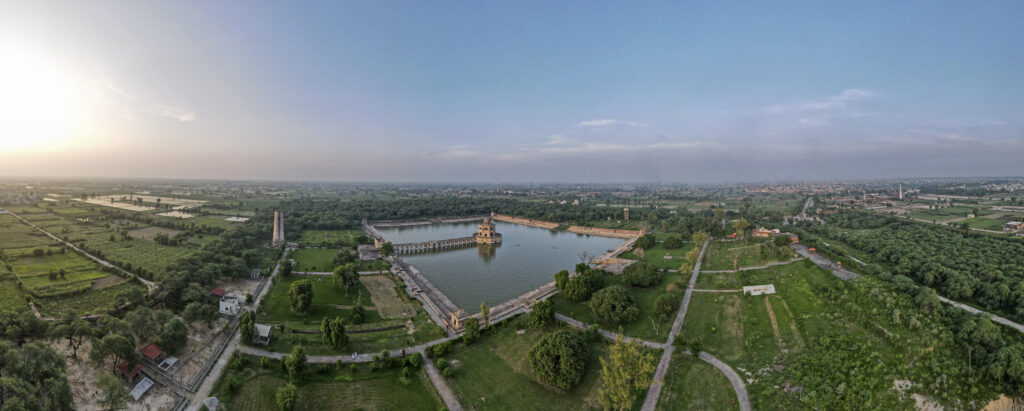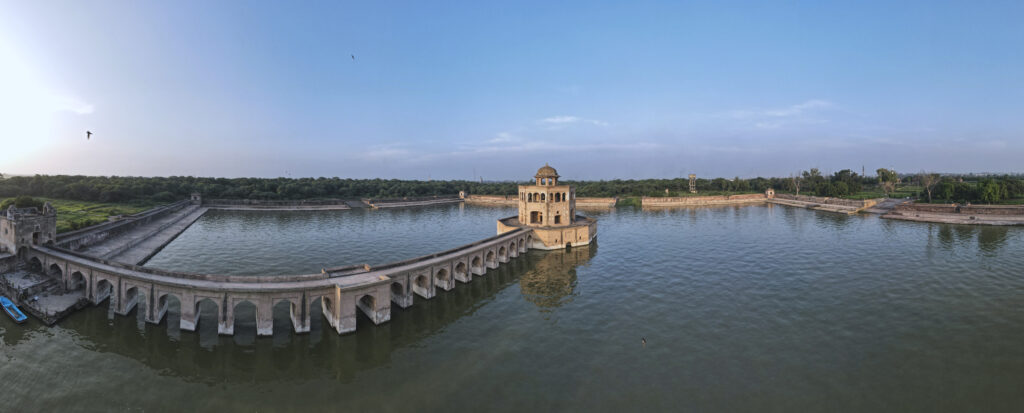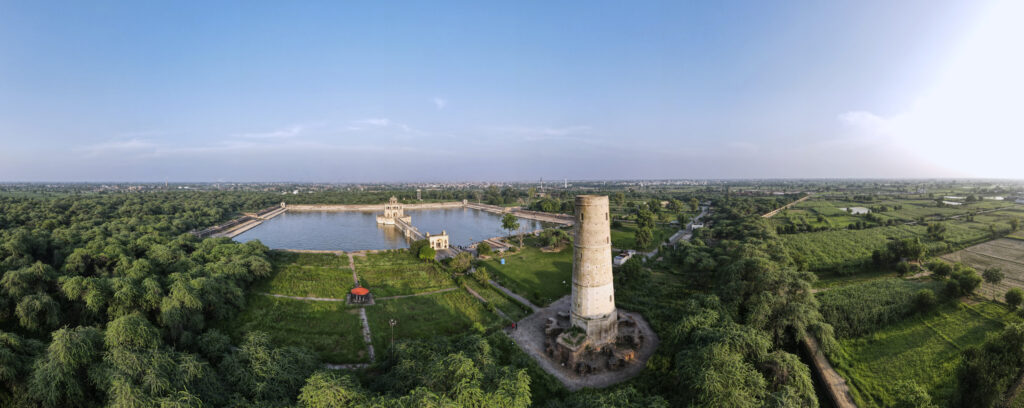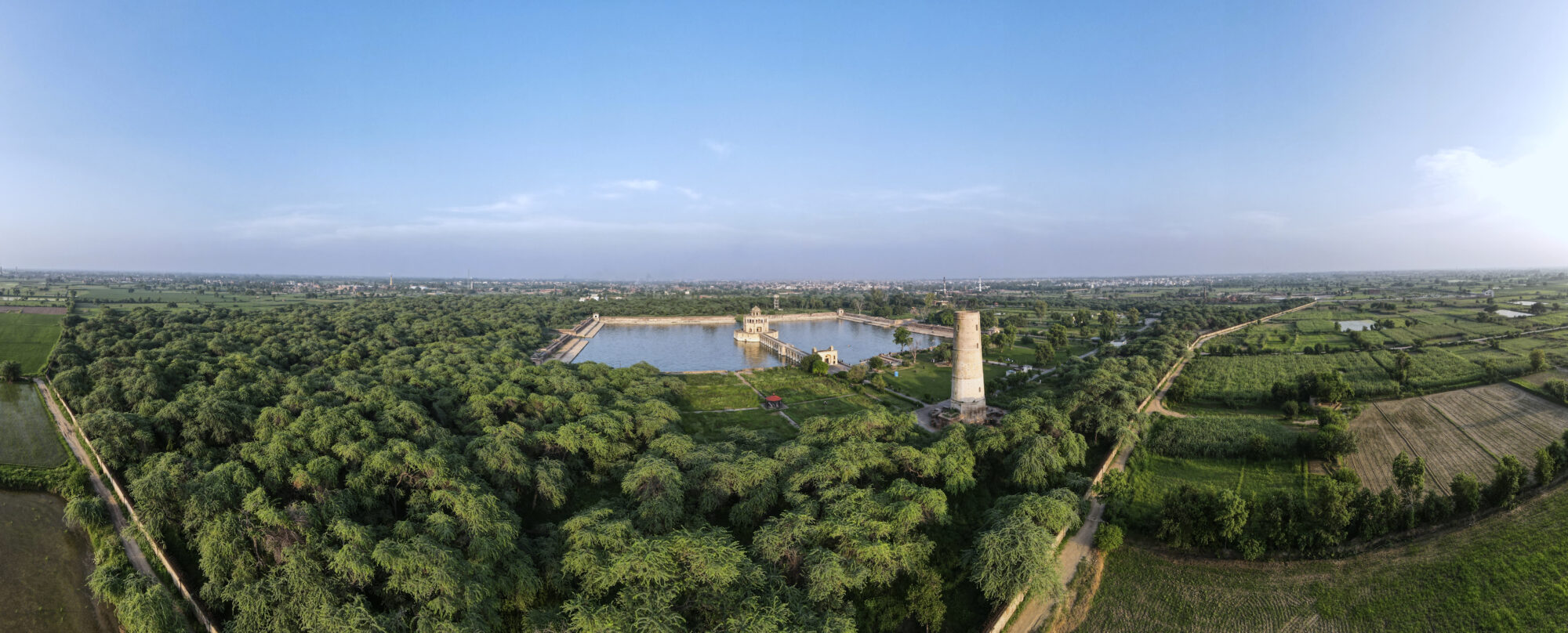Nestled in the lush landscapes of Sheikhupura, Pakistan, Hiran Minar stands as a remarkable testament to the grandeur of Mughal architecture. Originally built by Emperor Jahangir in the early 17th century, this historic monument was designed as a hunting retreat and a memorial for his beloved pet antelope, Mansraj. The name “Hiran Minar” translates to “Deer Tower,” reflecting its unique origin story. As drones soar above this site, they capture not only the intricate details of its construction but also the timeless beauty that continues to attract visitors from around the globe.
The Majestic Layout from Above
When viewed from the sky, Hiran Minar reveals its well-planned, symmetrical layout, a hallmark of Mughal architectural design. The main tower, standing at about 100 feet tall, is surrounded by a vast tank, covering approximately 750 by 890 feet. Four rectangular pavilions mark the tank’s corners, and pathways connect them to the central structure. The tank, once used to water the gardens and accommodate boats, is now a serene expanse of water reflecting the tower’s majesty.

The Tower: A Symbol of Regal Elegance
Rising proudly from the middle of the tank, the minar (tower) was built to commemorate the emperor’s pet antelope. The circular tower, adorned with engraved patterns and niches, is a striking example of Mughal finesse. From an aerial perspective, the tower’s symmetry and the concentric rings around it are visually arresting, offering a perfect alignment with the cardinal directions.
The Water Tank: A Legacy of Leisure

A significant feature of Hiran Minar is the expansive water tank that surrounds the central tower. The aerial views showcase the tank’s large size and its integration with the surrounding landscape. This tank once served both functional and recreational purposes, including royal hunting parties that utilized its vast expanse for water sports and boating. The octagonal baradari (pavilion) in the center of the tank is connected to the tower by a bridge, creating a visually appealing axis that drone footage captures beautifully.
A Drone’s Unique Perspective

Modern drone technology allows us to appreciate Hiran Minar in ways that the Mughals could only have imagined. From high above, drones provide a bird’s-eye view that highlights the perfect geometric alignment and the sheer scale of the site. They capture the interplay of light and shadow across the monument’s intricate carvings and the tranquil waters of the tank, offering a new perspective on this ancient site’s architectural brilliance.
Historical Significance and Cultural Legacy
Beyond its architectural splendor, Hiran Minar represents the rich cultural and historical tapestry of the Mughal era. It was part of a larger hunting complex used by Mughal royalty and stands as a testament to their love of nature and grandeur. The aerial views help us understand the strategic placement and the elaborate planning that went into creating such a multifunctional space.
Preservation and Tourism
Today, Hiran Minar is a protected heritage site, attracting tourists and history enthusiasts. Its preservation is crucial for understanding the region’s past. Drone photography plays an essential role in documenting the site, offering detailed insights that aid in conservation efforts and enhancing the visitor experience.
